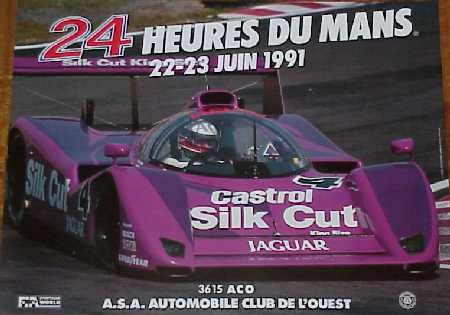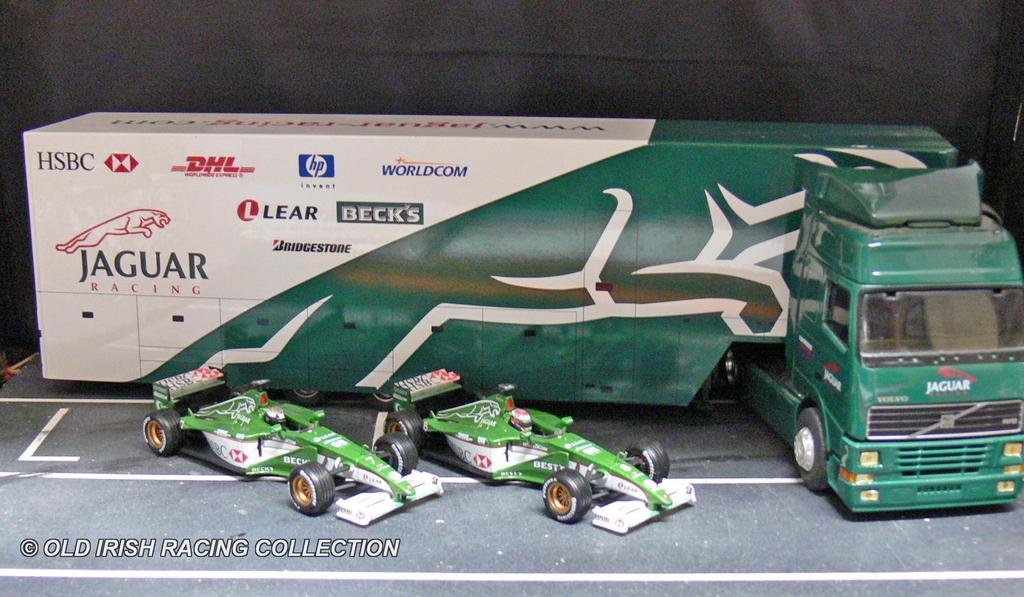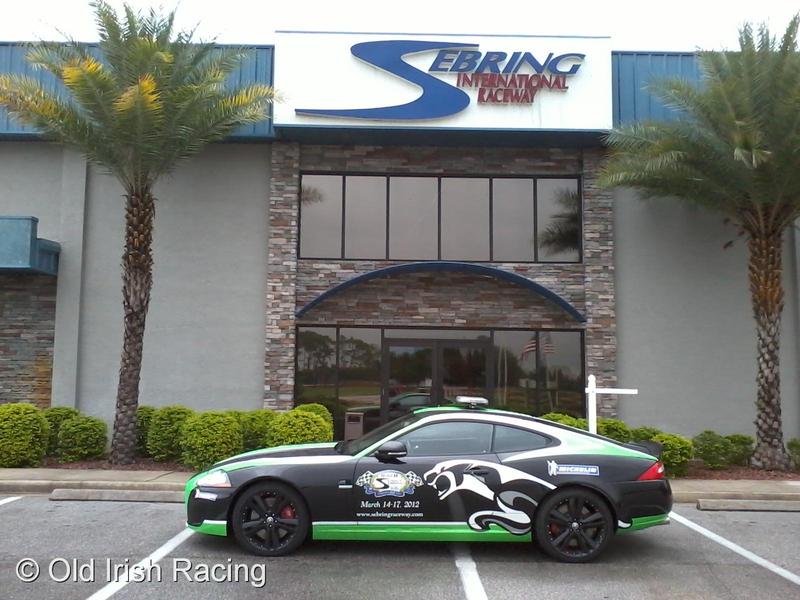
TWR and Jaguar began the 1990's as one of the top competitors in both IMSA and Group C racing. Narrowly missing a seventh Le Mans win and the IMSA Championship, Jaguar would once more become World Sportscar Championship and Teo Fabi would win the Driver's Championship in 1991. Hampered by punitive regulations at Le Mans in '91 and more FIA mandated changes for the 1992 season, prototype racing was reduced to a former shadow of itself. Having accomplished what they set out to, TWR & Jaguar instead turned their attentions to the XJ220 supercar. There would be two more runs at Le Mans in 1993 and 1995 with the XJ220 and another season in IMSA, but a great era of Jaguar racing was closing.
 |
 |
||
The turn of the new century finally saw a Jaguar entry in F1. However, under financed, the effort never did live up to its promise. It did give us Jaguar fanatics hope for a F1 championship, albeit briefly before Ford with its financial problems, pulled the plug and it all ended in 2004. In the USA, the Jaguar name would consistently be on the winners podium in the Trans Am series from 2001-2005 and again briefly at Le Mans, GT3 and in the American Le Mans series.
| 2005 XKRS (Trans Am Champion, 2005): Paul Gentilozzi was kind enough to autograph this car for me. The nice folks at Rocketsports also sent a hat and pit pass holder. They have recently done some record breaking attempts with the new XF at Bonneville. Go to Rocketsports website for details. Model by SCALEXTRIC 1/32 |
2005 XKRS (Trans Am, 2005): Raced by Greg Pickett, founder of Cytosport the maker of CytoMax sports drink, sponsor of this car. Pickett was the 1978 Trans Am champion driving a Corvette. He was a front runner in the series, finishing third in the '05 championship points. Model by SCALEXTRIC 1/32 |
2007 XKR GT3 (FIA GT3 European Championship, 2007): Apex Motorsport has developed the XKR for use in the FIA GT3 European Championship. Apex previously had teamed with Bentley to win the 2003 24 Hours of Le Mans. The XKR GT3, features a 4.2L V8 supercharged engine (475+ HP) and retains the aluminium body of its production cousin. Rocketsports Racing developed a similar car for Le Mans. Model by SCALEXTRIC 1/32 |
THE SIGNATURE PROJECT & RACING DIORAMAS
RACING TRANSPORTERS, SUPPORT VEHICLES AND OTHER TRUCKS Pt.2
JAGUAR RACING CARS:
ECURIE ECOSSE - JAGUAR and MORE!
JAGUAR PRODUCTION CARS:
FERRARI RACING CARS:
PORSCHE RACING & PRODUCTION CARS:
GRAND PRIX, FORMULA 1 & INDY CARS:
1900 - 1959
1960 - 1969
1970 - 1979
1980 - PRESENT
World F1 Champions 1950 - PRESENT
GREAT AUTOMOTIVE MAKES & RACING TEAMS:
AMERICAN:
CHAPARRAL
CHEVROLET & GM POWERED RACE CARS
COBRAS & DAYTONAS - SHELBY CARS
CUNNINGHAM EQUIPE - THE CARS OF BRIGGS CUNNINGHAM
FORD POWER: GT40's, MUSTANGS & MORE
MISC. AMERICAN MADE
BRITISH:
ASTON MARTIN RACE & PRODUCTION
AUSTIN HEALEY & HEALEY
BRABHAM F1 & SPORTS CARS
BRM F1 & SPORTS CARS
LOLA SPORTS RACING CARS
LOTUS F1, RACE & PRODUCTION
McLAREN RACING & PRODUCTION CARS
MG CARS - RACING & PRODUCTION
TRIUMPH RACE & PRODUCTION CARS
MISC. BRITISH MADE
FRENCH:
BUGATTI
FRENCH MADE
GERMAN & SWEDISH:
AUDI RACING
BMW RACE & PRODUCTION
MERCEDES BENZ RACE & PRODUCTION
MISC. GERMAN & SWEDISH MADE
ITALIAN & SPANISH:
ABARTH RACING
ALFA ROMEO RACE & PRODUCTION
LANCIA RACE & PRODUCTION
MASERATI RACE & PRODUCTION
MISC. ITALIAN & SPANISH MADE
ASIAN & AUSTRALIAN:
DATSUN/NISSAN RACING
TOYOTA RACE & PRODUCTION CARS
MISC. JAPAN, ASIAN & AUSTRALIAN MADE
VETERAN, CLASSIC & SPECIAL INTEREST CARS All MARQUES
LAND SPEED AND ENDURANCE RECORD CARS LE MANS THE PINACLE OF ENDURANCE RACES: HALL OF FAME DRIVER TRIBUTES: PLAY BALL! - IT'S BASEBALL TIME:
For copies of images, questions or comments about the collection to: OLD IRISH RACING
Back to: OLD IRISH RACING MODELS INDEX Home Page
Back to: OLD IRISH RACING Home Page Legal stuff: Content and images on this website unless stated, are the property and content of Old Irish Racing and may not be used without permission. Old Irish Racing is not affiliated with, or represent any other entity past or present.
PLEASE NOTE: From 1968 into the 1990's tobacco companies sponsored many significant race cars. We don't promote tobacco use, rather we stronly discourage it. However, we do promote historical accuracy, Old Irish Racing chooses
to display models in our collection as historically accurate as possible. While seeing a tobacco advert on a car gives me no more desire to go smoke than seeing a car makes me want to go
suck on its exhaust pipe. If tobacco (or alcohol) adverts on race cars offend you, please go look at nice pictures of bunnies and kittens on another site. Thank you!
THE 24 HOURS of LE MANS 100 YEARS - 1923-2023
THE OLD IRISH RACING HALL OF FAME
A TRIBUTE TO BOYHOOD HEROES AND MY DAD
All pages and content on this website (unless noted) are owned and the copyrighted and may not be reproduced or redistributed without the consent of Old Irish Racing. This is a private collection, unless noted, pieces are not for sale!

